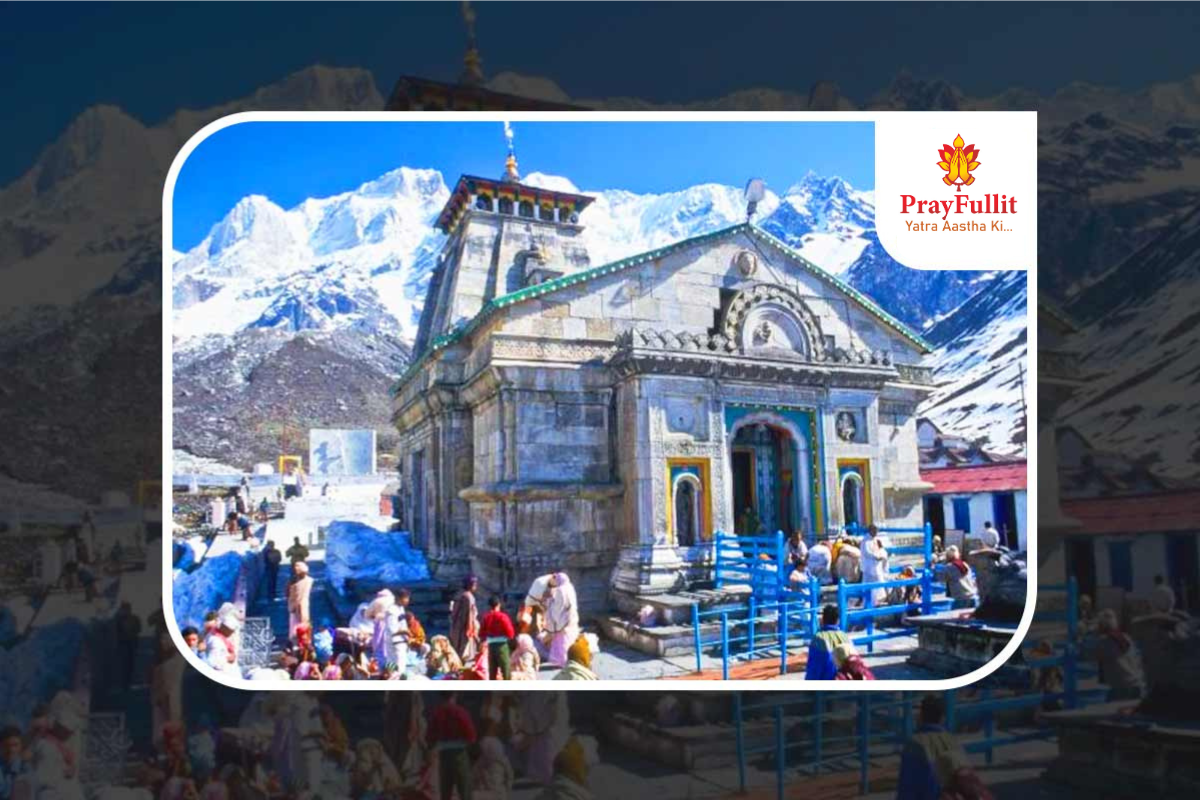
Kedarnath is one of the most sacred pilgrimage sites in India, dedicated to Lord Shiva. Located in the Rudraprayag district of Uttarakhand, in the Garhwal Himalayas, Kedarnath is one of the twelve Jyotirlingas, which are highly revered shrines dedicated to Shiva. It is also one of the four major sites in the Char Dham Yatra, along with Badrinath, Yamunotri, and Gangotri.
Key Features:
Sacred Jyotirlinga:- The Kedarnath Temple is believed to have been established by the Pandavas, heroes of the Indian epic Mahabharata. According to legend, after the Kurukshetra war, the Pandavas sought Lord Shiva to absolve their sins, but Shiva evaded them by taking the form of a bull. At Kedarnath, he submerged himself into the ground, leaving only his hump visible, which is now worshipped as the Shiva lingam at Kedarnath.
- Architecture:- The temple, built of massive stone slabs over a large rectangular platform, stands amidst the snow-capped peaks of the Himalayas, including the towering Kedarnath peak (6,940 meters) in the backdrop. The temple is built in the Nagara style of architecture, and despite being located in such a remote and harsh environment, it has withstood the test of time, including natural disasters.
- Main Deity:- The main deity of the Kedarnath Temple is a conical-shaped Shiva lingam, representing the hump of the bull, which is a manifestation of Lord Shiva. Inside the temple, there is also a statue of Nandi, Shiva’s divine bull.
Significance:- Mahabharata Connection:- As per legend, the Pandavas constructed the temple after the war of Mahabharata. It is said that Lord Shiva forgave their sins here, and this act of penance by the Pandavas makes Kedarnath a vital part of Hindu mythology.
- Panch Kedar:- Kedarnath is the most important of the Panch Kedar, the five temples dedicated to Shiva in the Garhwal region. The other four are Tungnath, Rudranath, Madhyamaheshwar, and Kalpeshwar.
Location and Accessibility:- The temple is situated at an altitude of 3,583 meters (11,755 feet) above sea level near the Mandakini River. The remote location and harsh weather conditions make the journey to Kedarnath challenging but deeply rewarding.
- Pilgrimage Trek:- To reach the temple, pilgrims undertake a 16-kilometer trek from Gaurikund, the nearest roadhead. The trek is scenic yet strenuous, passing through rugged mountainous terrain, forests, and rivers.
Char Dham Yatra:- Kedarnath is one of the four sacred shrines in the Char Dham Yatra, which also includes Badrinath, Yamunotri, and Gangotri. Visiting these four sites is considered highly auspicious and is believed to grant liberation (Moksha).
Opening and Closing:- The temple is open for six months each year, from April/May (Akshaya Tritiya) to November (Kartik Purnima), due to the severe winter conditions in the region. During the winter, the deity is moved to Ukhimath, where worship continues.
Festivals and Pilgrimage:- Maha Shivaratri:-The festival of Maha Shivaratri is celebrated with great fervor at Kedarnath, attracting thousands of pilgrims who participate in special prayers and rituals dedicated to Lord Shiva.
- Kedarnath Yatra:- The yatra (pilgrimage) to Kedarnath is considered one of the most sacred acts of devotion in Hinduism. Despite the difficult journey, millions of pilgrims visit the temple each year to seek the blessings of Lord Shiva.
Kedarnath is not just a place of worship but a site of immense spiritual significance and natural beauty. The journey to Kedarnath is often considered a test of faith and endurance, with the temple itself symbolizing the divine presence of Lord Shiva amidst the majestic Himalayas.